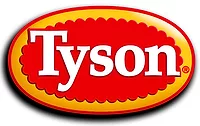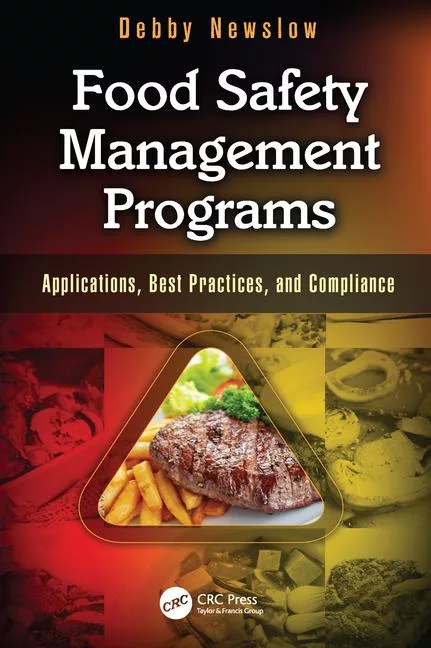Human Fatigue: A Hidden Food Safety Hazard

 Human fatigue is a widespread and more troubling condition than most realize. In a 2017 National Safety Council (NSC) nationwide study on workplace fatigue, 2,010 adults were surveyed varying in industry, age, gender, ethnicity, and geographic regions. The study reported the findings shown in Figure 1.
Human fatigue is a widespread and more troubling condition than most realize. In a 2017 National Safety Council (NSC) nationwide study on workplace fatigue, 2,010 adults were surveyed varying in industry, age, gender, ethnicity, and geographic regions. The study reported the findings shown in Figure 1.
These results provide an insight to the various ways human fatigue may affect us and, more importantly, its prevalence both on and off the job.
Food safety plays a guardian role in protecting public health for food illness outbreaks. To keep the public safe from food contamination, food safety is regulated by many U.S. agencies that impose strict safety-driven processes applied at different stages throughout the food distribution system.[1] These include inspections, auditing, testing, process manufacturing, packaging, storage, delivery, and preparation. Any chink in the armor can have unwanted or disastrous results (Figure 2).[2]
.jpg) Food safety, along with most U.S. safety regulatory agencies, does not acknowledge human fatigue as a contributor to human error or workplace injuries or accidents. This is because there are no federal codified, regulatory requirements or enforceable guidelines identifying human fatigue as a safety risk requiring mitigation. Yet, there exists extensive research that has investigated human fatigue’s negative impact on human performance and safety in the workplace in many different industrial settings, to include the U.S. Centers for Disease Control and Prevention (CDC) and the National Institute for Occupational Safety and Health. Regrettably, human fatigue research and its derived benefits remain largely locked away in the academic community. It is this environment that prevents human fatigue from being recognized as a contributor to human error or as a valid safety hazard.
Food safety, along with most U.S. safety regulatory agencies, does not acknowledge human fatigue as a contributor to human error or workplace injuries or accidents. This is because there are no federal codified, regulatory requirements or enforceable guidelines identifying human fatigue as a safety risk requiring mitigation. Yet, there exists extensive research that has investigated human fatigue’s negative impact on human performance and safety in the workplace in many different industrial settings, to include the U.S. Centers for Disease Control and Prevention (CDC) and the National Institute for Occupational Safety and Health. Regrettably, human fatigue research and its derived benefits remain largely locked away in the academic community. It is this environment that prevents human fatigue from being recognized as a contributor to human error or as a valid safety hazard.
In the meantime, there still remains an important need to inform workers of the risks that human fatigue poses. Why? In the previously cited 2017 NSC study on workplace fatigue, it was reported that 80% (1,608) of the 2,010 surveyed did not understand fatigue and its associated workplace risk factors.[3]
Food safety is a niche occupational community when compared to others such as construction, healthcare, or manufacturing. Because of this, there is very little research on human fatigue in which food safety is a part. Additionally, since there is no regulatory requirement, there are no historical occupational safety data to evaluate human fatigue’s role in human errors, injuries or accidents. Despite these drawbacks, it doesn’t preclude using human fatigue research found in other workforce areas and comparing it to food safety.
Human Fatigue
Human fatigue is not a condition that happens immediately. It begins with a consistent loss of sleep over time. Simply defined, sleep loss is an inability to receive a proper amount and quality of sleep on a regular basis. There are many contributing sources to sleep loss. They include mental or emotional stress, medications, short- or long-term medical conditions, work induced factors (shiftwork, long hours, or weeks), and lifestyle choices. These can exist in combination with others.[4]
The National Sleep Foundation recommends that adults ages 18 through 64 receive at least 7 to 9 hours of sleep per day to become physically rested and mentally alert. Typically, we usually receive less than the recommended amount.
In a study conducted by CDC, about 180,000 workers were surveyed over a 2-year period. Representing different industries, the results show that approximately 38 percent of workers, ages 18–54, received less than 7 hours of sleep per day.[5]
In this same study, it was reported that 40 percent of workers in food preparation and serving-related activities received less than 7 hours of sleep per day.[5]
The Necessity of Sleep
Sleep is a biological necessity. You may be able to go without water or food for days, but you cannot go without sleep for days. Sleep is a time reserved for the body to perform a host of vital physical and mental maintenance functions. Upon completion of sleep, the body produces a fully physically rested and mentally alert person.[4]
 When the proper amount or quality of sleep is not obtained, the body responds by sending out a number of different warning signs to alert us that more sleep is needed. These warnings produce noticeable increases and decreases in physical and mental capabilities as well as behavioral changes (Figure 3).
When the proper amount or quality of sleep is not obtained, the body responds by sending out a number of different warning signs to alert us that more sleep is needed. These warnings produce noticeable increases and decreases in physical and mental capabilities as well as behavioral changes (Figure 3).
Our View of Sleep
Unfortunately, even when these warning signs are present, we do not place the same importance on sleep as our body does. The thought of making up for lost sleep or establishing a regular sleep schedule is not a priority. This inaccurate view of sleep results in a haphazard sleep pattern and an acceptance of tiredness as being a normal condition.[4]
Safety Hazard? What Hazard?
We rarely think of sleep loss as a food safety hazard or a contributor to human error. Instead, we generally understand safety as a set of processes, rules, or practices of do’s and don’ts. So, sleep loss does not qualify or fit what we know about safety. However, when coming to work tired, sleep loss becomes a legitimate safety hazard.
Consider this. How many times have you felt fully rested and mentally alert after getting less sleep? Thinking everything is fine, you start your shift only to realize a short time later how tired you really are. You are forgetful, moving slow, and your concentration is hindered. It’s only then that you realize you should have gotten more sleep.
This example shows how very inadequate we are in assessing our own level or tiredness or its severity. Even when we realize our tiredness, we tend to ignore it. It’s our acceptance of tiredness and a reluctance to prevent or remedy this situation that makes sleep loss a safety hazard.[4]
Sleep Loss Rx
 To understand how much sleep you are losing, you can do this simple self-check by recording your sleep hours and pattern. The sleep debt bar graph shows how this can be done (Figure 4).
To understand how much sleep you are losing, you can do this simple self-check by recording your sleep hours and pattern. The sleep debt bar graph shows how this can be done (Figure 4).
Record the number of hours of sleep you should get versus the hours you actually get each day. The difference in these hours is your sleep debt. You can also record how tired or refreshed you are after each day. As you keep track, pay particular attention to the number of sleep debt hours you accumulate over a given period. If your sleep debt seems to be adding up on a regular basis, chances are you are more tired than you think and you may a potential safety risk.[4]
To recover from sleep loss, it is very important to pay back the hours of sleep that were missed or lost. The way in which you repay sleep debt hours will vary widely from person to person.[6]
One way is to extend your sleep hours. The best time may be on your days off. For example, on the weekend you may sleep 10 to 14 hours rather than the usual 5 to 6 hours you would get on a workday. A second way is to add a portion of your sleep debt hours to the hours you are supposed to get each night. For instance, you would add perhaps an hour or two over a 7-day period. So, if your sleep debt was 12 hours total, you could repay 2 hours of additional sleep each night over a six-day period. Whichever way you choose or works best for you, the extra sleep you decide to get must consist of a proper amount and quality and occur at nighttime.[4]
What Will You Do?
Sleep loss is a personal, hidden safety hazard waiting to happen. It does not care whether you are a worker, supervisor, or manager. The root cause lies in deciding how much or how little sleep you get and how rested you are or will be on a consistent basis. We must constantly remind ourselves that we are charged with our own personal safety and the safety of the public whom we serve.
Joe Balas, M.Sc., M.A., the principal consultant at Human Factors Safety, has over 20 years of experience in the medical, training, aviation safety, system safety, and human factors engineering fields. He served 26 years in the military as a U.S. Navy medic and as an U.S. Air Force aerospace physiologist. He holds a B.A. in biology, an M.Sc. in occupational safety and health, and an M.A. in human communication.
References
1. www.ndsu.edu/pubweb/~saxowsky/aglawtextbk/chapters/foodlaw/USagencies.html.
2. www.foodsafetynews.com/2015/12/the-10-biggest-u-s-foodborne-illness-outbreaks-of-2015/#.Wro5bkxFzIU.
3. www.nsc.org/work-safety/safety-topics/fatigue/survey-report.
4. www.metro-magazine.com/blogpost/728395/danger-ahead-sleep-loss-safety-and-you.
5. www.cdc.gov/mmwr/volumes/66/wr/mm6608a2.htm?s_cid=mm6608a2_e.
6. Miller, JC. 2017. “Anatomy of a Fatigue-Related Accident.” CreateSpace.
Looking for quick answers on food safety topics?
Try Ask FSM, our new smart AI search tool.
Ask FSM →







